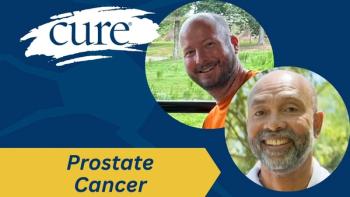
How to Brighten a Cancer Survivor’s Day

A cancer survivor offers tips to family, friends and strangers on how to support those with cancer.
As someone who publicly shared their cancer diagnosis, I get a lot of questions about how to care for loved ones who are also going through health-related challenges. We don’t learn this topic in school, we rarely see topics on this subject, and yet for every single diagnosis, there are at least five to ten more people who are captured into the caregiver role.
I want to start out by saying that each relationship dynamic to the patient is going to be different. This is not a conclusive or exhaustive list of ways in which to provide support. This is my version, that worked best for ME in ways that my family/friends/ strangers gave me the safe space to fight and survive.
I’ve gone ahead to bucket these communities as each have special places within our lives.
- Family
- Friends
- Strangers
Family
I can confidently say (as a patient), that having a family member with a diagnosis (especially if that individual is their child), is harder for the family member than it is on the patient. The parent, spouse, sister/brother, cannot do anything. They have no control over the matter. They must watch from the sidelines and hope that the end result is positive. The number of times where one of my family members murmured, “I wish I could take this diagnosis from you, so I could fight for you” was very high.
This lack of control can bring a spiraling effect into the equation. Because the family member cannot control the outcome, they get frustrated, intimidated, they might over-extend their services and is some worse cases completely shut down. There are a lot of different ways in which families react to trauma.
What are some of the common ways in which family can provide a safe and nurturing support system?
- Start the day with a smile, no matter what. I could write a book on this topic. The power of a smile can be the simplest and most effective way to show love and security. Even on the hardest of days, when things seem to be going wrong – lead with a smile.
- Bring humor to the dark. It is scientifically proven that laughter lowers cortisol levels. Cortisol levels are your stress response to what is happening in your environment. With a quick laugh, those levels can be decreased, and an entire mood can be switched.
I used humor as a way to cope. I joked about my diagnosis, my bald head, the perks of being a cancer patient all the time. It allowed me a release a sense of darkness and brought humility to the equation.
- Simple gestures. Whether it’s a note that reminds someone that you’re thinking of them, a flower you picked up and placed in a vase, a yummy smoothie that you crafted, a foot or back massage to ease the tension, reading a book aloud, etc. these simple and seemingly insignificant gestures can bring a deep sense of love and compassion into a day that doesn’t feel so positive.
- Listen. This goes for all the communities. Be a safe haven to listen and respond with curiosity. It’s not fun to talk about the diagnosis, but in the right time, in the right place it’s an opportunity to express the thoughts that are running through your mind. To allow for you to be raw and unapologetic.
You do not need to have an answer or a solution to the problem, listen, nod and make the patient feel as though every emotion they are feeling is valid.
- Treat them like normal. It’s not fun to play patient all the time. It’s refreshing to feel as though you are the same person you were prior to your diagnosis. The endless pity party helps no one and reminds the patient they are sick.
- Manage expectations. It can be demoralizing when someone can’t do an activity they once could do in their sleep. In a gentle and empathetic way, set new standards of success. If a patient wants to cook everyone dinner, suggest if you can make it a team effort. If a patient is looking to go for a walk, suggest something that feels doable and realistic. One of the worst feelings as a patient, is feeling like you let others down. It can feel as though your entire life is one big let-down to your family, so help set realistic goals that make it feel as though everything is a success.
Friends
- When you get on the phone, please do not ask “How are you doing?” Rather, ask “How are you doing today?” This small adjustment (asking how they are doing that day) completely changes how the answer is address. It can be intimidating to answer a broad question such as “How are you doing.” It is also the most common four words you’ll likely be asked as a patient. By giving a specific timeframe the patient can open up and provide real insight on how today is going vs. yesterday or the day before. This then promotes a conversation that can provide actionable steps in best supporting their needs at that time.
- Engage in regular contact. It’s easy to check in during the milestone days of an individual’s treatment. Whether it be a chemo day, a surgery, scan, etc. It’s the days that don’t bare any significance where a friend could really make an impact. On those days, where routines are dull, movement feels at a standstill, check in and provide some light into their day.
- Consider conversation topics. Try not to talk about the diagnosis. You may be curious and want an update, but if the patient does not voluntarily share – do not press. It was helpful for me to have a friend call to update me on something that felt ‘normal’ rather than a check-in. I wanted to hear the boy drama, the new adventures, the work gossip.
- Find activities to do together. In a patient’s world, finding exciting activities to fill up their day can be extremely challenging. In today’s world it’s even more isolating with COVID-19 and immunocompromised systems. Plan a virtual activity – whether it’s a craft, book club, learning a new skill, playing a board-game, having a fashion show, building a piece of furniture – the ideas are endless.Pick something that seems exciting and schedule a virtual date to partake in that activity together.
Strangers
- Send a smile
- Treat patients normally
- Leave a note. One of the most memorable things a stranger did for me was slip me a post-in notes that said, “You’ve got this” written on the front. It was the smallest and most simple act of kindness, and yet it was a moment that will never forget.
- In the right situation, share your own story or loved one’s story of success. This suggestion is a “once-every-so-often” one, but after meeting someone knew, if the patient opens up and share their health-related concern, share positivity of someone who fought and survived. This positive reinforcement can result in a wake of optimism that leaves the person hopeful in their recovery.
As I mentioned, these suggestions are small, they are actionable, but they take thought. When interacting with a patient, be mindful of two things – your body-language and your words. Listen more than speak, provide a safe place for emotions. Most importantly, make room for connection. The worst part of having a diagnosis is the feeling of being alone. If you can help change that feeling, you have made a positive impact.
For more news on cancer updates, research and education, don’t forget to




